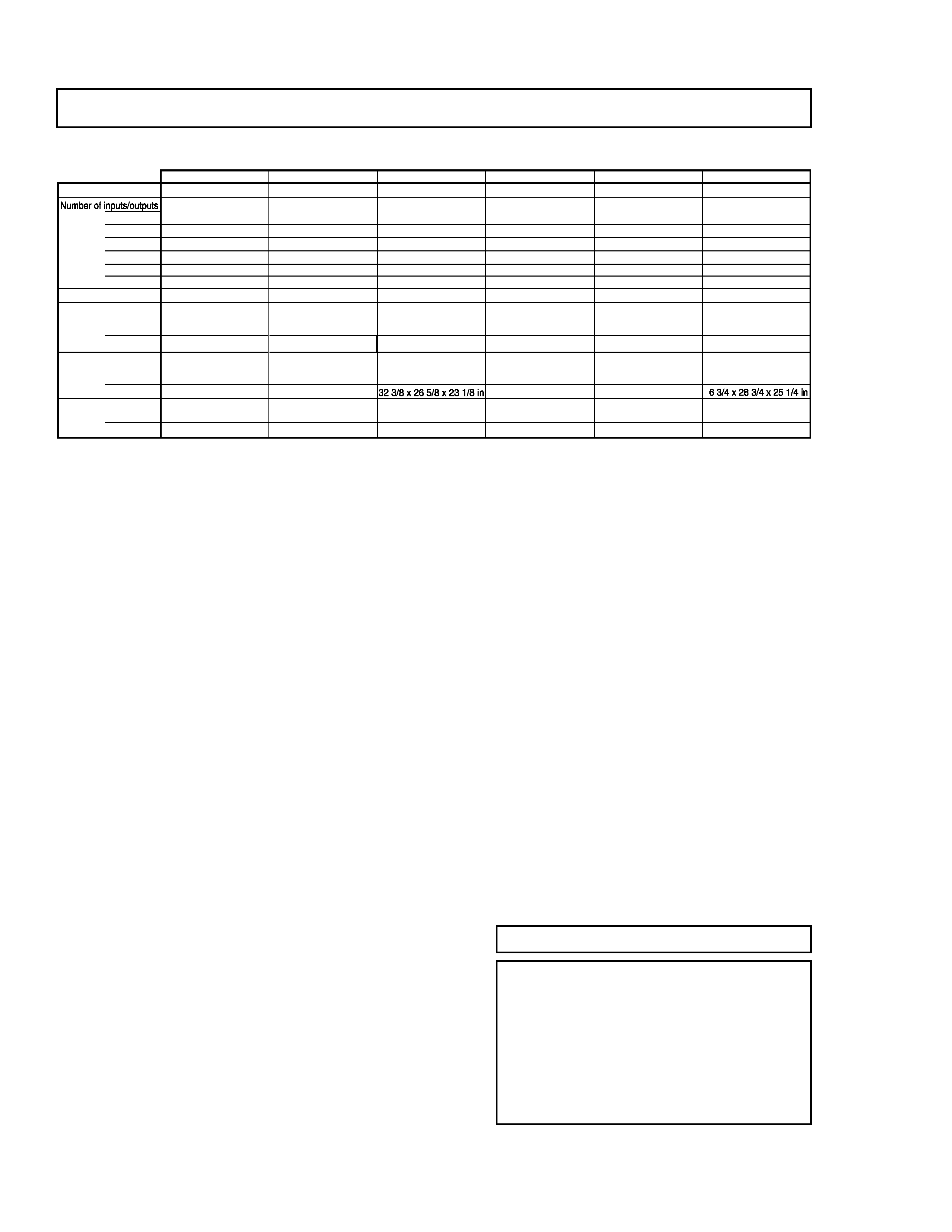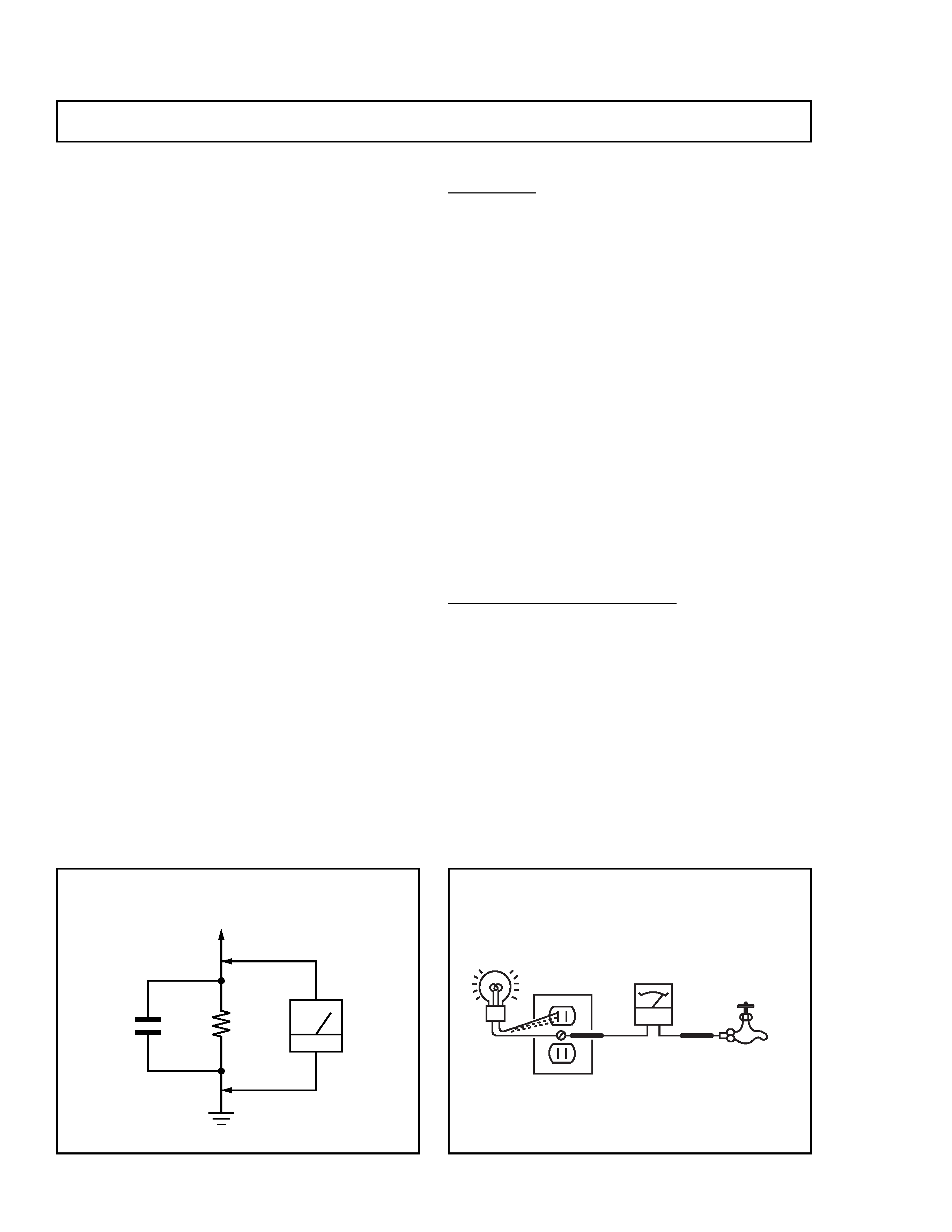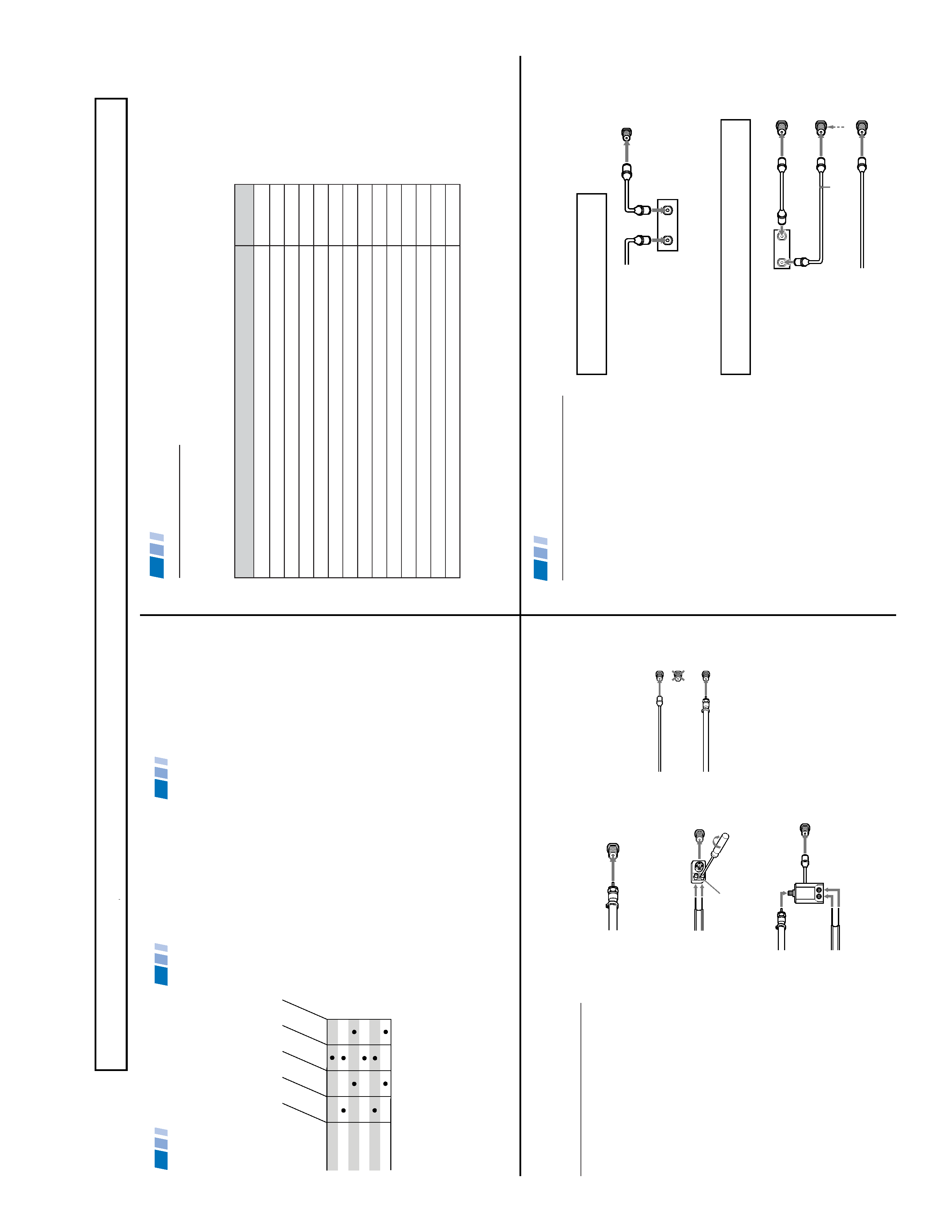
TRINITRON® COLOR TV
MODEL
DEST.
COMMANDER
CHASSIS NO.
KV-32S42
US
RM-Y168
SCC-S07U-A
KV-32S42
CND
RM-Y168
SCC-S08R-A
KV-32S66
US
RM-Y169
SCC-S07V-A
KV-32S66
CND
RM-Y169
SCC-S08S-A
KV-32V42
US
RM-Y168
SCC-S07W-A
KV-35S42
US
RM-Y168
SCC-S07R-A
KV-35S42
CND
RM-Y168
SCC-S07P-A
KV-35S66
US
RM-Y169
SCC-S07S-A
KV-35S66
CND
RM-Y169
SCC-S08Q-A
KV-35V42
US
RM-Y168
SCC-S07T-A
SERVICE MANUAL
CHASSIS
AA-2D
RM-Y168
KV-35V42
873 Front.p65
7/9/99, 5:15 PM
1

-- 2 --
KV-32S42/32S66/32V42/35S42/35S66/35V42
SPECIFICATIONS
1)
1 Vp-p 75 ohms unbalanced, sync negative
2)
Y: 1 Vp-p 75 ohms unbalanced, sync negative
C: 0.286 Vp-p (Burst signal), 75 ohms
3)
500 mVrms (100% modulation), Impedance: 47 kilohms
4)
More than 408 mVrms at the maximum volume setting (variable)
More than 408 mVrms (fix)
Impedance (output): 2 kilohms
(
· ) SRS (SOUND RETRIEVAL SYSTEM)
The (
· ) SRS (SOUND RETRIEVAL SYSTEM) is
manufactured by Sony Corporation under license
from SRS Labs, Inc. It is covered by U.S. Patent No.
4,748,669. Other U.S. and foreign patents pending.
The word `SRS' and the SRS symbol (
· ) are
registered trademarks of SRS Labs, Inc.
BBE and BBE symbol are trademarks of BBE Sound,
Inc. and are licensed by BBE Sound, Inc. under U.S.
Patent No. 4,638,258 and 4,482,866.
Television system
American TV standard, NTSC
Channel coverage
VHF:2-13/UHF:14-69/CATV:1-125
Picture tube
Trinitron® tube
Visible screen size
32-inch picture measured diagonally
(KV-32S42/32S66/32V42)
35-inch picture measured diagonally
(KV-35S42/35S66/35V42)
Actual screen size
34-inch picture measured
(KV-32S42/32S66/32V42)
37-inch picture measured
(KV-35S42/35S66/35V42)
Antenna
75 ohm external terminal for VHF/UHF
Supplied Accessories
RM-Y168 (KV-32S42/32V42/35S42/35V42)
RM-Y169 (KV-32S66/35S66)
Batteries size AA (R6) (2)
Optional Assessories
A/V Cable VMC-810/820/830HG
Audio Cable RKC-515HG
S-Link Cable RK-G69HG
S Video Cable YC-15/30HG
TV Stand SU-32A4, SU-35A4
Design and specifications are subject to change without notice.
KV-32S42
KV-32S66
KV-32V42
KV-35S42
KV-35S66
KV-35V42
Power requirements
120V,60Hz
120V,60Hz
120V,60Hz
120V,60Hz
120V,60Hz
120V,60Hz
Video
1)
12
2
2
3
S Video
2)
11
1
1
2
Audio
3)
12
2
2
3
Audio Out
4)
11
1
1
1
Monitor Out
--
1
-
-
1
S-Link
-3
-
-
3
-
Speaker output(W)
5W x 2
5W x 2
5W x 2
5W x 2
5W x 2
5W x 2
Power Consumption(W)
In use(Max)
180W
180W
180W
210W
210W
210W
In standby
2W
2W
2W
2W
2W
2W
Dimensions(W/H/D)
(mm)
791 x 707 x 604.5mm
791 x 707 x 604.5mm
821 x 675.3 x 587 mm
870 x 761x 653 mm
870 x 761x 653 mm
920 x 730.8x 641.8 mm
(in)
31 x 27 13/16 x 23 3/4 in 31 x 27 13/16 x 23 3/4 in
34 1/4 x 30 x 25 5/8 in
34 1/4 x 30 x 25 5/8 in
3
Mass
(kg)
65 kg
65 kg
70 kg
83 kg
83 kg
90 kg
(lbs)
143 lbs
143 lbs
154 lbs
183 lbs
183 lbs
203 lbs
3
1
3
1

-- 3 --
KV-32S42/32S66/32V42/35S42/35S66/35V42
Safety Check-Out ........................................................................ 4
1.
GENERAL
Connecting and Installing the TV ........................................... 5
Operating Video Equipment ................................................... 7
Operating a Cable Box or Satellite Receiver ........................ 8
Troubleshooting ..................................................................... 8
2.
DISASSEMBLY
2-1. Rear Cover Removal ..................................................... 9
2-2. Chassis Assembly Removal ......................................... 9
2-3. Service Position ........................................................... 10
2-4. Control Switch Removal .............................................. 10
2-5-1. Picture Tube Removal (32") ..................................... 11
2-5-2. Picture Tube Removal (35") ..................................... 11
3. SET-UP ADJUSTMENTS
3-1. Beam Landing .............................................................. 12
3-2. Convergence ............................................................... 13
3-3. Focus ........................................................................... 14
3-4. Screen (G2) ................................................................. 14
3-5. White Balance Adjustments ......................................... 14
4. SAFETY RELATED ADJUSTMENTS
4-1.
R530, R531 Confirmation Method ........................... 15
(Hold-down Confirmation and Readjustments)
4-2. B+ Voltage and Confirmation Method ........................... 15
5. CIRCUIT ADJUSTMENTS .................................................. 16
TABLE OF CONTENTS
6. DIAGRAMS
6-1. Block Diagram (KV-32S42/35S42 ONLY) ................... 23
6-2. Block Diagram ............................................................. 27
(KV-32S66/32V42/35S66/35V42 ONLY)
6-3. Circuit Boards Location ................................................ 34
6-4. Printed Wiring Boards and Schematic Diagrams ....... 34
· A Board ..................................................................... 35
· AV Board ................................................................... 48
· B Board ..................................................................... 48
· C Board .................................................................... 51
· G Board .................................................................... 52
· HV Board .................................................................. 55
· HS Board .................................................................. 55
· P Board ..................................................................... 56
· WB Board ................................................................. 57
· WA Board .................................................................. 58
· UV Board .................................................................. 59
6-5. Semiconductors .......................................................... 63
7. EXPLODED VlEWS
7-1. Chassis (KV-32S42 ONLY) ......................................... 64
7-2. Chassis (KV-32S66 ONLY) ......................................... 65
7-3. Chassis (KV-32V42 ONLY) ......................................... 66
7-4. Chassis (KV-35S42 ONLY) ......................................... 67
7-5. Chassis (KV-35S66 ONLY) ......................................... 68
7-6. Chassis (KV-35V42 ONLY) ......................................... 69
8. ELECTRICAL PARTS LIST
· Table of Contents for Parts List ....................................... 70
· Parts Listings .................................................................... 71
WARNINGS AND CAUTIONS
Section
Title
Page
Section
Title
Page
CAUTION
SHORT CIRCUIT THE ANODE OF THE PICTURE TUBE
AND THE ANODE CAP TO THE METAL CHASSIS, CRT
SHIELD, OR CARBON PAINTED ON THE CRT, AFTER
REMOVING THE ANODE.
WARNING!!
AN ISOLATION TRANSFORMER SHOULD BE USED
DURING ANY SERVICE TO AVOID POSSIBLE SHOCK
HAZARD, BECAUSE OF LIVE CHASSIS. THE CHASSIS
OF THIS RECEIVER IS DIRECTLY CONNECTED TO THE
AC POWER LINE.
SAFETY-RELATED COMPONENT WARNING!!
COMPONENTS IDENTIFIED BY SHADING AND MARK
ON THE SCHEMATIC DIAGRAMS, EXPLODED VIEWS,
AND IN THE PARTS LIST ARE CRITICAL FOR SAFE
OPERATION. REPLACE THESE COMPONENTS WITH
SONY PARTS WHOSE PART NUMBERS APPEAR AS
SHOWN IN THIS MANUAL OR IN SUPPLEMENTS
PUBLISHED BY SONY. CIRCUIT ADJUSTMENTS THAT
ARE CRITICAL FOR SAFE OPERATION ARE IDENTIFIED
IN THIS MANUAL. FOLLOW THESE PROCEDURES
WHENEVER CRITICAL COMPONENTS ARE REPLACED
OR IMPROPER OPERATION IS SUSPECTED.
ATTENTION!!
APRES AVOIR DECONNECTE LE CAP DE L'ANODE, COURT-CIRCUITER
L'ANODE DU TUBE CATHODIQUE ET CELUI DE L'ANODE DU CAP AU
CHASSIS METALLIQUE DE L'APPAREIL, OU AU COUCHE DE CARBONE
PEINTE SUR LE TUBE CATHODIQUE OU AU BLINDAGE DU TUBE
CATHODIQUE.
ATTENTION!!
AFIN D'EVITER TOUT RESQUE D'ELECTROCUTION PROVENANT D'UN
CHÁSSIS SOUS TENSION, UN TRANSFORMATEUR D'ISOLEMENT DOIT
ETRE UTILISÉ LORS DE TOUT DÉPANNAGE. LE CHÁSSIS DE CE
RÉCEPTEUR EST DIRECTEMENT RACCORDÉ À L'ALIMENTATION
SECTEUR.
ATTENTION AUX COMPOSANTS RELATIFS A LA SECURITE!!
LES COMPOSANTS IDENTIFIES PAR UNE TRAME ET PAR UNE MARQUE
SUR LES SCHEMAS DE PRINCIPE, LES VUES EXPLOSEES ET LES
LISTES DE PIECES SONT D'UNEIMPORTANCE CRITIQUE POUR LA
SECURITE DU FONCTIONNEMENT. NE LES REMPLACER QUE PAR DES
COMPOSANTS SONY DONT LE NUMERO DE PIECE EST INDIQUE DANS
LE PRESENT MANUEL OU DANS DES SUPPLEMENTS PUBLIES PAR
SONY. LES REGLAGES DE CIRCUIT DONT L'IMPORTANCE EST CRI-
TIQUE POUR LA SECURITE DU FONCTIONNEMENT SONT IDENTIFIES
DANS LE PRESENT MANUEL. SUIVRE CES PROCEDURES LORS DE
CHAQUE REMPLACEMENT DE COMPOSANTS CRITIQUES, OU
LORSQU'UN MAUVAIS FONTIONNEMENT SUSPECTE.

-- 4 --
KV-32S42/32S66/32V42/35S42/35S66/35V42
SAFETY CHECK-OUT
After correcting the original service problem, perform the
following safety checks before releasing the set to the
customer:
1. Check the area of your repair for unsoldered or
poorly soldered connections. Check the entire board
surface for solder splashes and bridges.
2. Check the interboard wiring to ensure that no wires
are "pinched" or touching high-wattage resistors.
3. Check that all control knobs, shields, covers, ground
straps, and mounting hardware have been replaced.
Be absolutely certain that you have replaced all the
insulators.
4. Look for unauthorized replacement parts, particularly
transistors, that were installed during a previous repair.
Point them out to the customer and recommend their
replacement.
5. Look for parts which, though functioning, show
obvious signs of deterioration. Point them out to the
customer and recommend their replacement.
6. Check the line cords for cracks and abrasion.
Recommend the replacement of any such line cord
to the customer.
7. Check the B+ and HV to see if they are specified
values. Make sure your instruments are accurate;
be suspicious of your HV meter if sets always have
low HV.
8. Check the antenna terminals, metal trim, "metallized"
knobs, screws, and all other exposed metal parts for
AC leakage. Check leakage as described below.
Leakage Test
The AC leakage from any exposed metal part to earth
ground and from all exposed metal parts to any exposed
metal part having a return to chassis, must not exceed 0.5
mA (500 microamperes). Leakage current can be measured
by any one of three methods.
1. A commercial leakage tester, such as the Simpson
229 or RCA WT-540A. Follow the manufacturers'
instructions to use these instructions.
2. A battery-operated AC milliammeter. The Data
Precision 245 digital multimeter is suitable for this job.
3. Measuring the voltage drop across a resistor by
means of a VOM or battery-operated AC voltmeter.
The "limit" indication is 0.75 V, so analog meters must
have an accurate low voltage scale. The Simpson's
250 and Sanwa SH-63Trd are examples of passive
VOMs that are suitable. Nearly all battery-operated
digital multimeters that have a 2 VAC range are
suitable (see Figure A).
How to Find a Good Earth Ground
A cold-water pipe is a guaranteed earth ground. The cover-
plate retaining screw on most AC outlet boxes is also at earth
ground. If the retaining screw is to be used as your earth
ground, verify that it is at ground by measuring the resistance
between it and a cold-water pipe with an ohmmeter. The
reading should be zero ohms. If a cold-water pipe is not
accessible, connect a 60- to 100-watt trouble- light (not a neon
lamp) between the hot side of the receptacle and the retaining
screw. Try both slots, if necessary, to locate the hot side on the
line; the lamp should light at normal brilliance if the screw is at
ground potential (see Figure B).
Figure B. Checking for earth ground.
Figure A. Using an AC voltmeter to check AC leakage.
1.5 k
0.15 µF
AC
Voltmeter
(0.75 V)
To Exposed Metal
Parts on Set
Earth Ground
Trouble Light
AC Outlet Box
Ohmmeter
Cold-water Pipe

-- 5 --
KV-32S42/32S66/32V42/35S42/35S66/35V42
SECTION
1
GENERAL
The
instr
uctions
mentioned
here
are
par
tial
abstr
acts
from
the
Oper
ating
Instr
uction
Man
ual.The
page
n
umbers
sho
wn
reflect
thos
e
of
the
Oper
ating
Instruction
Man
ual.
1
Thank
you
for
purchasing
the
Sony
Trinitron
®
Color
TV.
Before
reading,
check
the
model
number
located
on
the
front
of
this
manual.
The
menus
and
illustrations
used
in
these
instructions
are
for
KV-35S66.
Differences
in
operation
or
features
will
be
indicated
in
the
text,
for
example,
"KV-35S66
only."
This
manual
is
divided
into
five
major
sections.
We
recommend
that
you
review
the
contents
before
you
begin
to
use
your
new
TV.
1
Connecting
and
Installing
the
TV
This
section
guides
you
through
your
initial
set
up.
It
shows
how
to
connect
to
your
antenna
or
cable,
and
connect
any
accessories.
2
Basic
Set
Up
This
section
teaches
you
the
basic
skills
needed
to
operate
your
new
TV.
3
Using
your
New
TV
This
section
shows
the
initial
setup
screen
and
how
to
use
your
remote
control.
4
Using
your
Menus
This
section
teaches
you
how
to
access
on-screen
menus
and
adjust
your
TV's
settings.
5
Troubleshooting
This
section
helps
you
to
correct
problems
you
may
encounter
with
your
TV.
Safety
·
Operate
the
TV
only
with
120
V
AC
.
·
The
plug
is
designed,
for
safety
purposes,
to
fit
in
the
wall
outlet
only
one
way.
If
you
are
unable
to
insert
the
plug
fully
into
the
outlet,
contact
your
dealer.
·
If
any
liquid
or
solid
object
should
fall
inside
the
cabinet,
unplug
the
TV
immediately
and
have
it
checked
by
qualified
personnel
before
operating
it
further.
Installing
·
To
prevent
internal
heat
build-up,
do
not
block
the
ventilation
openings.
·
Do
not
install
the
TV
in
a
hot
or
humid
place,
or
in
a
place
subject
to
excessive
dust
or
mechanical
vibration.
·
The
AC
power
cord
is
attached
to
the
rear
of
the
TV
with
hooks.
Do
not
attempt
to
remove
the
cord
from
these
hooks.
Doing
so
could
cause
damage
to
the
TV.
Using
This
Manual
W
elcome!
Precautions
Model Number
PICTURE
IN
PICTURE
(PIP)
SURROUND
AUT
OV
OLUME
CONTROL
KV
-32S42
KV
-32S66
KV
-32V42
KV
-35S42
KV
-35S66
KV
-35V42
SRS
2
Cable
or
antenna
only
3
Cable
and
antenna
3
Cable
box
4
Cable
box
and
cable
to
view
scrambled
channels
4
VCR
and
cable
or
antenna
5
VCR
and
cable
box
5
Two
VCRs
for
tape
editing
6
Satellite
Receiver
7
VCR
and
Satellite
Receiver
7
DVD
Player
8
Audio
system
9
Camcorder
to
view
tapes
9
VCR
using
S-Link
10
Satellite
Receiver
using
S-Link
10
Connecting
and
Installing
the
TV
Refer
to
the
table
below,
it
will
direct
you
to
the
diagram
suitable
to
the
equipment
you
will
be
connecting.
If
you
will
be
connecting
See
page
Making
Connections
3
A
·
VHF
only
or
·
VHF/UHF
or
·
Cable
B
·
VHF
only
or
·
UHF
only
or
·
VHF/UHF
C
·
VHF
and
·
UHF
Antenna
connector
(Rear
of
TV)
VHF/UHF
300-ohm
twin
lead
cable
(Rear
of
TV)
VHF/UHF
75-ohm
coaxial
cable
75-ohm
coaxial
cable
300-ohm
twin
lead
cable
(Rear
of
TV)
VHF/UHF
EAC-66
U/V
mixer
(not
supplied)
Cable
and
antenna
KV-32S66,
35S66
only
If
your
cable
provider
does
not
feature
local
channels,
you
may
find
this
set
up
convenient.
Select
CABLE
or
antenna
(ANT)
mode
by
pressing
ANT
on
the
remote
control.
Note
In
order
to
receive
channels
with
an
antenna,
you
will
need
to
turn
your
CABLE
to
OFF
and
perform
the
AUTO
PROGRAM
function,
(see
page
23).
(Rear
of
TV)
AUX
VHF/UHF
TO
CONVERTER
(No
connection
"TO
CONVERTER"
in
this
case)
CATV
cable
Antenna
cable
Cable
or
Antenna
Connections
Connecting
directly
to
cable
or
an
antenna
The
connection
you
choose
will
depend
on
the
cable
found
in
your
home.
Newer
homes
will
be
equipped
with
standard
coaxial
cable
(see
A
);
older
homes
will
probably
have
30
0
-ohm
twin
lead
cable
(see
B
);
still
other
homes
may
contain
both
(see
C
).
4
Connecting
and
Installing
the
TV
(continued)
Cable
Box
Connections
Some
pay
cable
TV
systems
use
scrambled
or
encoded
signals
that
require
a
cable
box
to
view
all
channels.
Cable
box
1
Connect
the
coaxial
connector
from
your
cable
to
the
IN
on
your
cable
box.
2
Using
a
coaxial
cable,
connect
OUT
on
your
cable
box
to
VHF/UHF
on
your
TV.
Cable
box
and
cable
KV-32S66,
35S66
only
For
this
set
up,
you
can
switch
between
scrambled
channels
(through
your
cable
box),
and
normal
(CATV)
channels
by
pressing
ANT
on
your
remote
control.
Notes
·
Your
Sony
remote
control
can
be
programmed
to
operate
your
cable
box,
(see
page
30).
·
When
using
PIP,
you
cannot
view
the
AUX
input
in
the
window
picture.
Tip
z
Pressing
ANT
switches
between
these
inputs.
TO
CONVERTER
Cable
box
VHF/UHF
(Rear
of
TV)
AUX
75-ohm
coaxial
cable
(not
supplied)
CATV
cable
(unscrambled
channels)
(signal)
If
you
are
connecting
a
cable
box
through
the
AUX
input
and
would
like
to
switch
between
the
AUX
and
normal
(CATV)
input
you
should
consider
using
the
CHANNEL
FIX
feature,
(see
page
23).
Cable
box
Cable
OUT
IN
(Rear
of
TV)
VHF/UHF
If
you
will
be
controlling
all
channel
selection
through
your
cable
box,
you
should
consider
using
the
CHANNEL
FIX
feature,
(see
page
23).
OUT
IN
